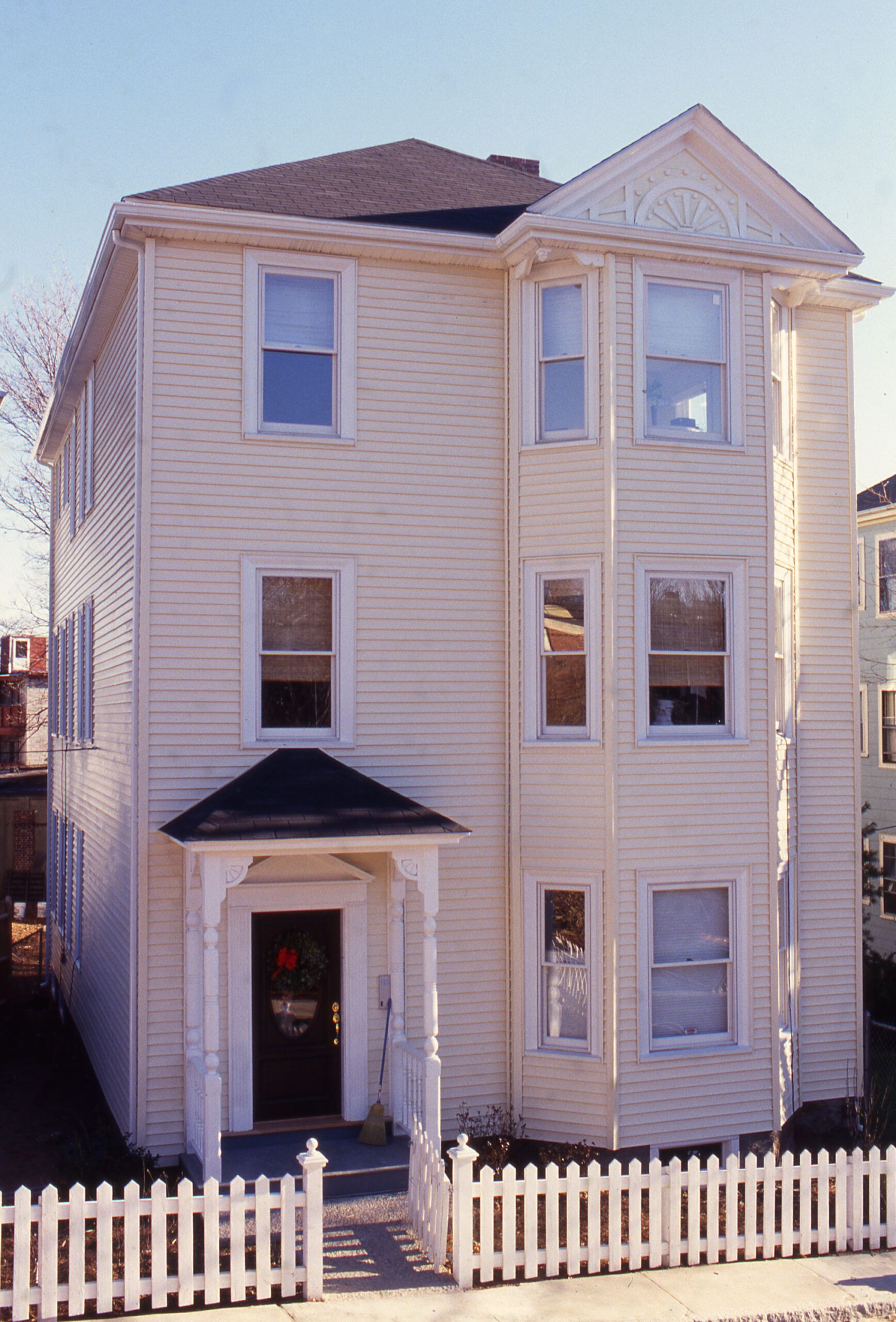The scene was not an appealing one: The once-proud triple-decker stood unoccupied and slowly dying at the end of a dead-end street. Its rear porches were falling off, the windows were beyond repair, the asphalt siding was awful and the interior stank of cats. Thankfully, its prospects started looking up as TOH joined forces with an innovative Boston urban rehabilitation program and work began to bring this 100-year-old structure back from the brink.
Before the City of Boston’s Public Facilities Department instituted its Residential Development Program, tax-foreclosed properties like our triple-decker were seized by the city and sold at auction, a practice that encouraged speculation and discouraged development. The program, which is still in place, works like this: abandoned and foreclosed houses and lots are sold to first-time buyers and small contractors, the kind of people that are likely to stay with their new investment. After selling the property for as little as one dollar, the department helps the homeowner by arranging for government subsidies to pay part of the rehabilitation costs and assisting in other finance and loan matters. It also aids in securing reliable contractors and assigns an on-site manager to ensure a successful rehabilitation.
“We’ve done over 150 homes since the program started in 1987,” says Tom Philbin of the Department of Neighborhood Development, as the Public Facilities Department is now known. “We’re really proud to play a part in providing ‘dream homes’ to people who otherwise wouldn’t be able to afford them. At the same time, we’re helping revitalize the city.”
Hazel Briceno was our homeowner. An accountant for a non-profit community development corporation, she qualified for purchase and took possession of her home on July 25, 1990. Her contractor was Abel Lopes, who had worked on other PFD projects and brought more than 20 years of experience to the job. (Tom Silva, just off the ambitious Concord barn project, took a break from the show.) Amy Wrigley was the project manager assigned to the job by the PFD.
Abel and his crew, along with the TOH crew, faced a tight budget of $126,000 to renovate Hazel’s top-floor apartment and the two lower rental units. We replaced the window sash, tore down and rebuilt the back porches, laid down a new roof, and removed the asphalt siding and replaced it with low-maintenance vinyl. Inside, we rewired and replumbed the building, gutted and replaced three kitchens and three baths, patched walls and ceilings, sanded and refinished the wooden floors, and put in a security system. The state’s lead-paint law was in its infancy in 1990, and this was our first project to feature the health and mitigation issues surrounding this poisonous substance. Finally, the guys restored Hazel’s front entrance, from steps to rails to decorative posts to oak front door. The undertaking marked a return to roots for TOH, which did its very first restoration in neighboringDorchester back in 1979.
The subject house itself was a winner. Triple-deckers (three-story, three-family dwellings) remain one of the most successful forms of housing ever built in New England and a fixture of Boston’s older neighborhoods. The beauty of the triple-decker lies in its efficiency of design: in addition to using land economically, the identical floor plans stacked atop one another divide in three the costs of the cellar and roof construction. Often, front and rear porches give breezy vantages onto the neighborhood. Tens of thousands of triple-deckers went up around the turn of the century to house workers’ families and newly-arrived immigrants, and they continue to provide solid, affordable housing in and around Boston. Perfect for live-in landlords, excellent for extended families, triple-deckers help build close-knit neighborhoods and provide a cohesive streetfront.
Memorable side trips included:
- tracing the process of making drywall, from a gypsum mine in Nova Scotia to the New Hampshire plant where miles are produced each day
- a factory visit in Georgia, broadloom carpet capital of America
- a visit to a Habitat for Humanity project in Charlotte, North Carolina
- Richard Trethewey’s trip to plumbers’ heaven, a North Carolina factory where PVC pipe is made
- Steve’s memorable visit to Japan, to see modular housing being built in an automated factory and put up in hours.
The Jamaica Plain project was one of our favorites, showing an innovative way to combat an urban problem, and saving a house in the process.

